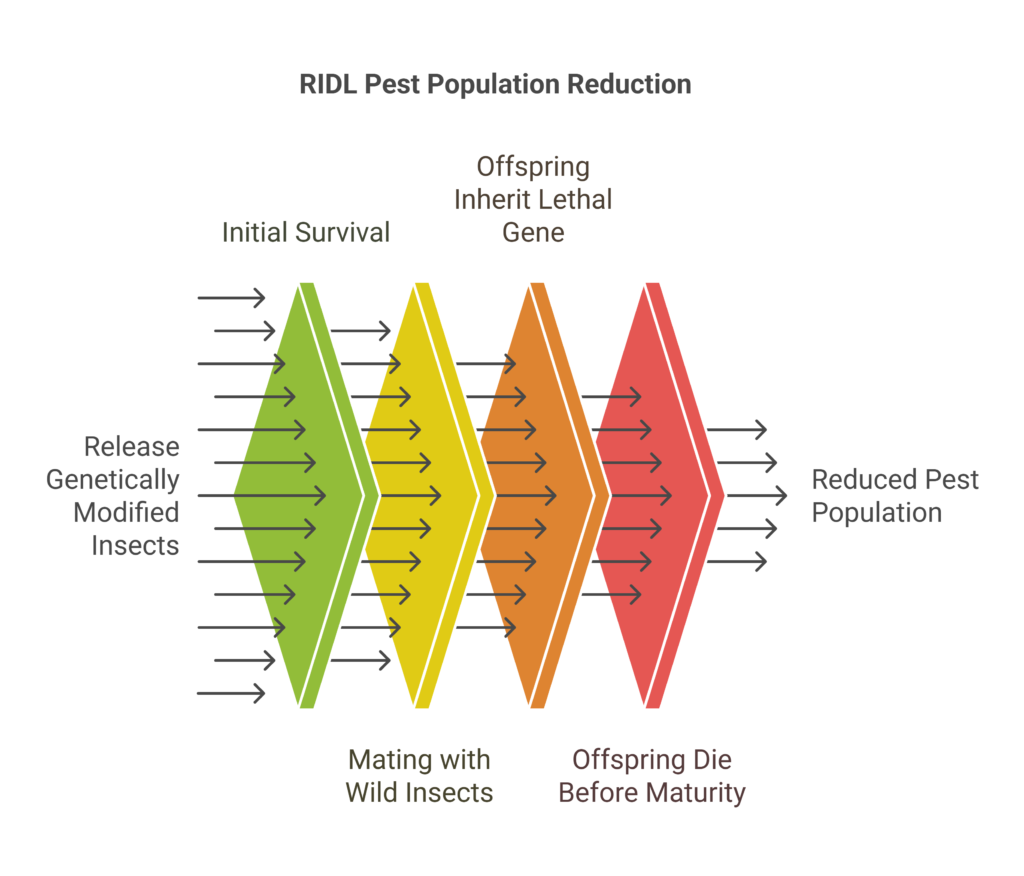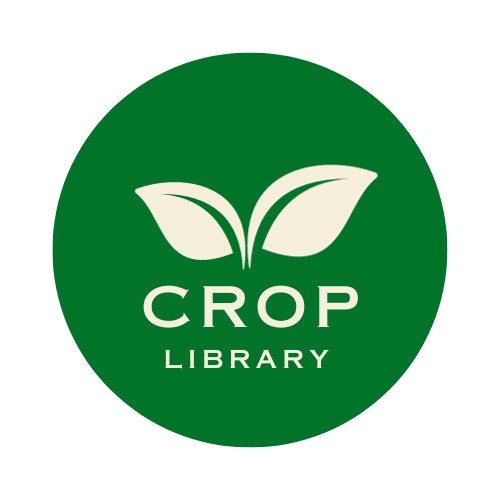Insect Resistance in Plants
Insect pests pose a significant threat to agriculture by damaging crops at various stages of growth, from seedlings to reproductive development. To address this challenge and enhance insect resistance in plants, scientists and farmers have developed innovative strategies to manage pest populations and improve crop protection. This blog post will explore some of the most effective methods for combating insect resistance, including RNA interference (RNAi), baculoviruses, enzyme inhibitors, Bacillus thuringiensis (Bt) proteins, and the Release of Insects Carrying a Dominant Lethal (RIDL) system. These approaches aim to strengthen insect resistance in plants while promoting sustainable and eco-friendly agricultural practices.
Inhibitors: Disrupting Insect Digestion

a) Alpha-Amylase Inhibitors
Alpha-amylase inhibitors are proteins that block the activity of alpha-amylase, an enzyme insects use to digest starch. By inhibiting this enzyme, these proteins disrupt the insect’s ability to break down and utilize starch, leading to reduced growth or death. For example, transgenic pea plants have been genetically modified to express the α-amylase inhibitor gene. When cowpea weevils, a common pest of legumes, feed on these plants, their digestion is impaired, resulting in starvation and increased mortality. Studies have shown that higher levels of the inhibitor correlate with greater larval mortality, making this a promising tool for pest control.
b) Proteinase Inhibitors
Proteinase inhibitors target proteases, enzymes that insects use to digest proteins. By disrupting protein digestion, these inhibitors impair insect growth and development. A notable example comes from the weed Solanum americanum, which produces a proteinase inhibitor.
Researchers have genetically modified tobacco plants to overexpress this inhibitor, resulting in enhanced resistance to pests like Helicoverpa armigera (cotton bollworm) and Spodoptera litura (tobacco cutworm). Additionally, these plants showed increased glandular trichome density, which secretes compounds that further deter herbivores. This dual mechanism highlights the potential of genetic engineering to improve crop resistance.
Bacillus thuringiensis (Bt) Cry Proteins: A Natural Insecticide
Certain insects are poisoned by the crystal (Cry) proteins produced by the soil bacteria Bt. These proteins cause damage to the insect’s intestinal lining when consumed, which results in its demise. Bt genes have been incorporated into cotton and corn to provide them natural pest resistance. Bt was originally used as a biological insecticide in the 1920s after being discovered in 1901. Its specificity—the alkaline environment of the insect’s gut activates the Cry toxins after ingestion, resulting in gut cell lysis and death—is what makes it effective.

Subspecies of Bt
a). Bt kurstaki
Bt kurstaki, a strain of Bacillus thuringiensis, is a biological pesticide targeting Lepidoptera (moths and butterflies), including pests like the European corn borer. It produces Cry toxins that, when ingested by larvae, damage their gut, causing paralysis and death. This specificity makes it an eco-friendly alternative to chemical pesticides, minimizing harm to non-target organisms. Bt kurstaki is widely used in integrated pest management (IPM) to protect crops and promote sustainable farming.
b). Bt israelensis
Bt israelensis, a subspecies of the bacterium Bacillus thuringiensis, is a highly effective biological control agent specifically targeting Diptera, an order of insects that includes flies and mosquitoes. It is particularly renowned for its ability to combat mosquito larvae, making it a valuable tool in controlling mosquito-borne diseases such as malaria, dengue, and Zika virus.
Bt israelensis produces specific crystal proteins (Cry and Cyt toxins) during sporulation, which, when ingested by the larvae of Diptera, disrupt their gut cells, leading to paralysis and death. This targeted action ensures that Bt israelensis is highly effective against mosquito larvae while posing minimal risk to non-target organisms, including humans, aquatic life, and beneficial insects.
Its use is widely adopted in public health programs and integrated pest management (IPM) strategies to reduce mosquito populations in water bodies such as ponds, marshes, and stagnant water sources, contributing to safer and healthier environments.
c). Bt tenebrionis
Bt tenebrionis, a strain of Bacillus thuringiensis, targets Coleoptera (beetles), including the Colorado potato beetle, a major potato crop pest. It produces Cry toxins that, when ingested, damage the gut, paralyze, and kill the beetles. This specificity makes it an eco-friendly alternative to chemical pesticides, minimizing harm to non-target organisms. It is widely used in integrated pest management (IPM) to protect crops sustainably.
d). Bt aizawai
Bt aizawai is another strain of the bacterium Bacillus thuringiensis, specifically effective against Lepidoptera, an order of insects that includes moths and butterflies. Like other Bt strains, it produces crystal proteins (Cry toxins) during sporulation, which, when ingested by the larvae of Lepidoptera, disrupt their gut cells, leading to paralysis and death.
Bt aizawai is often used in combination with other Bt strains, such as Bt kurstaki, to provide broader and more comprehensive pest control in agricultural settings. This combination approach enhances its effectiveness against a wider range of Lepidopteran pests, reducing the likelihood of resistance development and ensuring more robust crop protection.
Its targeted action makes it an environmentally friendly option, as it specifically affects pest species while posing minimal risk to non-target organisms, including beneficial insects, humans, and other animals. Bt aizawai is a valuable tool in integrated pest management (IPM) strategies, helping farmers manage pest populations sustainably and reduce reliance on chemical pesticides.
The mode of action of Cry toxins involves ingestion, activation by gut proteases, binding to gut receptors, and pore formation, which ultimately kills the insect. This targeted approach makes Bt an environmentally friendly pest control solution.
Baculoviruses: Viral Insect Control
Baculoviruses are DNA viruses that specifically infect insects, arachnids, and crustaceans. They are used as biological control agents, particularly in agriculture, due to their specificity and low environmental impact. Baculoviruses can be genetically engineered to enhance their lethality, such as by incorporating scorpion toxin genes.

Subgroups of Baculovirus
a). Granulosis Virus (GV)
Effective against specific insect larvae.
b). Nonoccluded Virus (NOV)
Lacks occlusion bodies and have unique infection mechanisms.
c). Nuclear Polyhedrosis Virus (NPV)
The most widely used subgroup, characterized by occlusion bodies that protect the virus in the environment.
The life cycle of NPV involves ingestion by the host, dissolution in the midgut, primary and secondary infections, and the release of occlusion bodies upon the host’s death. This cycle ensures the virus spreads and continues to control pest populations.
RNA Interference (RNAi): Silencing Essential Genes
RNA interference (RNAi) is a biological process where small RNA molecules silence specific genes by neutralizing targeted mRNA, preventing protein production. In pest control, RNAi can target essential genes in insects, disrupting their growth, reproduction, or survival, leading to death or reduced fitness. This method is highly specific, sustainable, and eco-friendly, minimizing harm to non-target organisms and reducing pesticide resistance risks. It is a promising tool for integrated pest management (IPM) and sustainable agriculture.
Release of Insects Containing a Dominant Lethal (RIDL)
A novel genetic method for managing pest populations is the RIDL (Release of Insects carrying a Dominant Lethal) system. It entails releasing insects into the wild that have undergone genetic modification and have a dominant deadly gene. These altered insects die before they reach adulthood because the fatal gene is transferred to their progeny when they mate with their wild counterparts. By disrupting their reproduction cycle, this technique gradually lowers the population of the pest.

The employment of a tetracycline-repressible transactivator protein (tTA) to control the expression of the lethal gene is a fundamental component of the RIDL system. Tetracycline suppresses the fatal gene, enabling the modified insects to live and be raised in regulated conditions. But when tetracycline isn’t present, like in the wild, the deadly gene kicks in, making sure the progeny don’t make it. The efficacy and safety of the system are improved by this exact control mechanism.
Because the RIDL system is so species-specific, it only targets the single pest species and has no effect on other living things. It is an eco-friendly substitute for conventional pest control techniques like chemical pesticides, which can damage ecosystems and beneficial insects, because of its selectivity. Sustainable pest management techniques are supported by the RIDL system, which lessens dependency on broad-spectrum pesticides.
Overall, the RIDL system offers a powerful and innovative tool for controlling pest populations. Its ability to target specific species, combined with its environmentally friendly approach, makes it a promising solution for integrated pest management (IPM) and addressing challenges in agriculture and public health, such as controlling disease-carrying mosquitoes or agricultural pests.
Impact of Insects on Crops
Insects can damage crops at various stages:
a). Seedling Stage
Young plants are vulnerable to attacks that can stunt growth or kill them.
b). Vegetative Growth
Insects feed on leaves and stems, reducing photosynthesis.
c). Reproductive Growth
Damage to flowers, seeds, or fruits directly impacts yield.
Insects attack both above-ground (leaves, stems) and below-ground (roots, tubers) parts of plants, making comprehensive pest control essential.
Current Methods for Controlling Insect Damage
a). Cultural Practices
Crop rotation, intercropping, and field hygiene disrupt insect life cycles.
b). Integrated Pest Management (IPM)
Combines biological, cultural, and chemical tools for sustainable pest control.
c). Genetic Resistance
Traditional breeding develops pest-resistant crop varieties.
d). Chemical Control
Insecticides are widely used but can lead to resistance and environmental harm.
Gene Transfer and Genetic Engineering
Gene transfer technologies offer innovative ways to control pests:
a). Digestive Enzyme Interfering Genes
Disrupt insect digestion, reduce survival and reproduction.
b). Insecticidal Proteins
Genes from bacteria like Bt are transferred into plants to produce toxins that kill specific insects.
Conclusion
Insect resistance and control are critical for ensuring crop health and productivity. Traditional methods like cultural practices and IPM are now complemented by advanced biotechnological approaches, such as genetic engineering, RNAi, and RIDL. These methods offer targeted, sustainable solutions to manage insect pests, reduce crop damage, and minimize environmental impact. By integrating these strategies, we can protect crops more effectively and support sustainable agriculture for the future.
